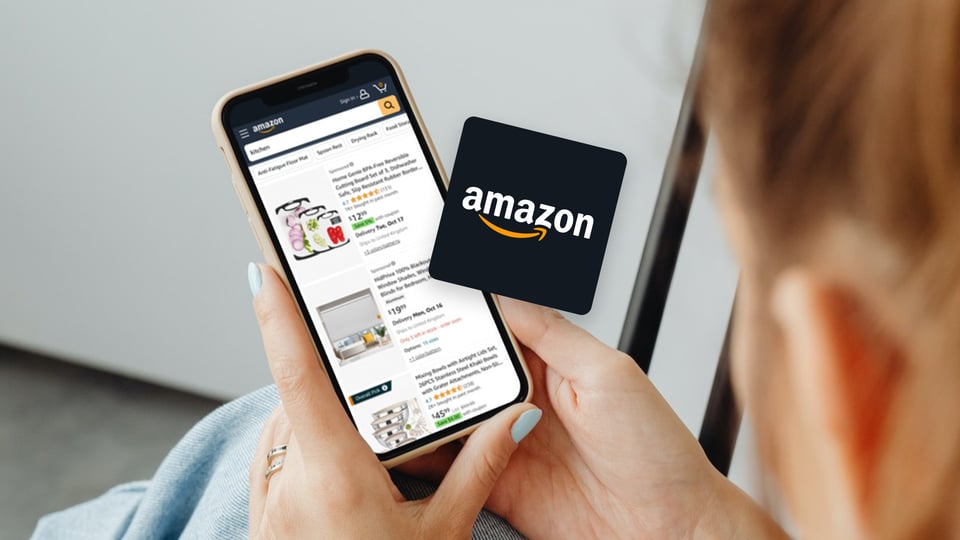How to sell internationally on Amazon

Expanding internally on Amazon can be an excellent way to scale your ecommerce business. Yes, it requires some learning and effort, but it’s not as complicated as you think. The good news is that Amazon Global Selling gives you access to valuable knowledge and tools to set you up for success.
What is Amazon Global Selling?
Amazon Global Selling (AGS) allows merchants and brands to sell their products internationally by listing them on one or more of Amazon's marketplaces in other countries, such as Amazon.it (Italy), Amazon.com.au (Australia), Amazon.co.jp (Japan), and others. Amazon currently operates 22 online stores worldwide.
AGS helps the transition to cross border ecommerce go more smoothly for sellers. It offers language support, fulfillment services, currency conversion, and provides resources on each country’s laws and regulations.
What are the benefits of selling internationally on Amazon?
Grow your customer base
This is an obvious benefit, as you can put your products in front of Amazon customers worldwide. As you expand your sales on a global level, the growth potential for your business becomes unlimited.
FBA fulfillment
Those who register for Amazon FBA international can have all of their fulfillment needs handled by Amazon, including inventory storage, picking, packing, and shipping, as well as local customer support in each marketplace.
Use same marketing strategies across marketplaces
The same marketing tactics that work so well for selling on Amazon US work just as well on Amazon’s international sites. Considering all the festivals, holidays, and promotions that are celebrated worldwide, like Christmas, Black Friday, and Cyber Monday, your sales boost during these heavy shopping periods can be multiplied.
Quick setup to start selling
You can quickly enter an international market using your current Amazon Seller account, product listings, and FBA status. Your products are managed with a single unified seller account across all the countries you sell in, all on one platform.
Automatic currency conversion and payment processing
As all customer transactions are processed through Amazon, it won't matter whether you sell in Dollars, Pounds, Euros, or Yen. Currency conversions are processed automatically with Amazon payments deposited directly into your bank account. This process ensures that all payments are made securely and timely, so you can maintain a steady cash flow.
Amazon eliminates language barriers
If you’re wondering how you would sell in a country where you don’t speak the native language, Amazon’s Seller Central Language Switcher tool is the answer. It allows you to manage all marketplace accounts in English.
Amazon’s Build International Listings feature automatically translates your product detail pages from your country into the language used on each international site. But remember that translations are not error-proof, so you may need to supplement with a professional translating service.
What are the challenges of selling internationally on Amazon?
There are some more challenging aspects to selling on Amazon globally. First, an individual seller account is required for each country. There are exceptions with unified seller accounts for North America (Canada, Mexico, and the USA) and Europe (UK, France, Germany, Spain, and Italy).
If you want to sell on other sites, such as Japan, Australia, India, etc., you have set up individual accounts and pay the monthly Amazon fees for each. So, before you open a new account, determine the local demand for your products before you start selling in that market.
There are also product restrictions and compliance issues that vary from country to country, which is something else to look into, as some countries are stricter than others. For instance, if selling in Japan, you will need legal approval to sell certain products, and will need to establish and maintain a local business address there.
Each country also comes with its own rules on taxing, importing, and customs duties. When selling in Europe, you’ll need to register for Value Added Tax (VAT). When selling in Australia, Amazon sellers do not need to register with the Australian Taxation Office (ATO) until sales reach AUD 75000, but they do have to pay import tax on shipments going into the country, at 10% of the shipment’s value.
Before you get set selling internationally on Amazon, do your due diligence to determine if these added expenses will make sense for your business’s bottom line.
How to sell internationally on Amazon
Follow these steps for getting started on Amazon’s international sites.
1. Decide where to sell.
Choose which country or group of counties you want to target. Learn what is required for taxes, regulations, and all other considerations for selling in a new marketplace and targeting those international consumers.
2. Register and list your products.
Register as a seller for the marketplaces that make sense, then list your products, determine pricing, and pick your payment method. Amazon offers tools you can leverage for managing your seller accounts and product listings across multiple marketplaces.
3. Plan for fulfillment needs.
Determine how your shipping and fulfillment will be handled and the costs, times, and requirements for each country you sell in. You can use Amazon FBA, do it yourself, or work with an international logistics partner.
For more detailed instructions on how to get started in a new marketplace, check out Amazon’s guidelines on how to succeed at selling globally.
Is selling internationally on Amazon worth it?
Selling in markets outside of the US has the potential to drive more sales and profitability. While there are added costs and other considerations, entering into one or two new markets first might be better to test the waters.
Whichever marketplace you choose, you want to ensure your products will sell. Research that country's market trends and keep all expenses and exchange rates in mind before investing in inventory. Going global can be a great move for your business if you determine that you can make a decent profit.
Blijf op de hoogte, blijf voorop lopen:



